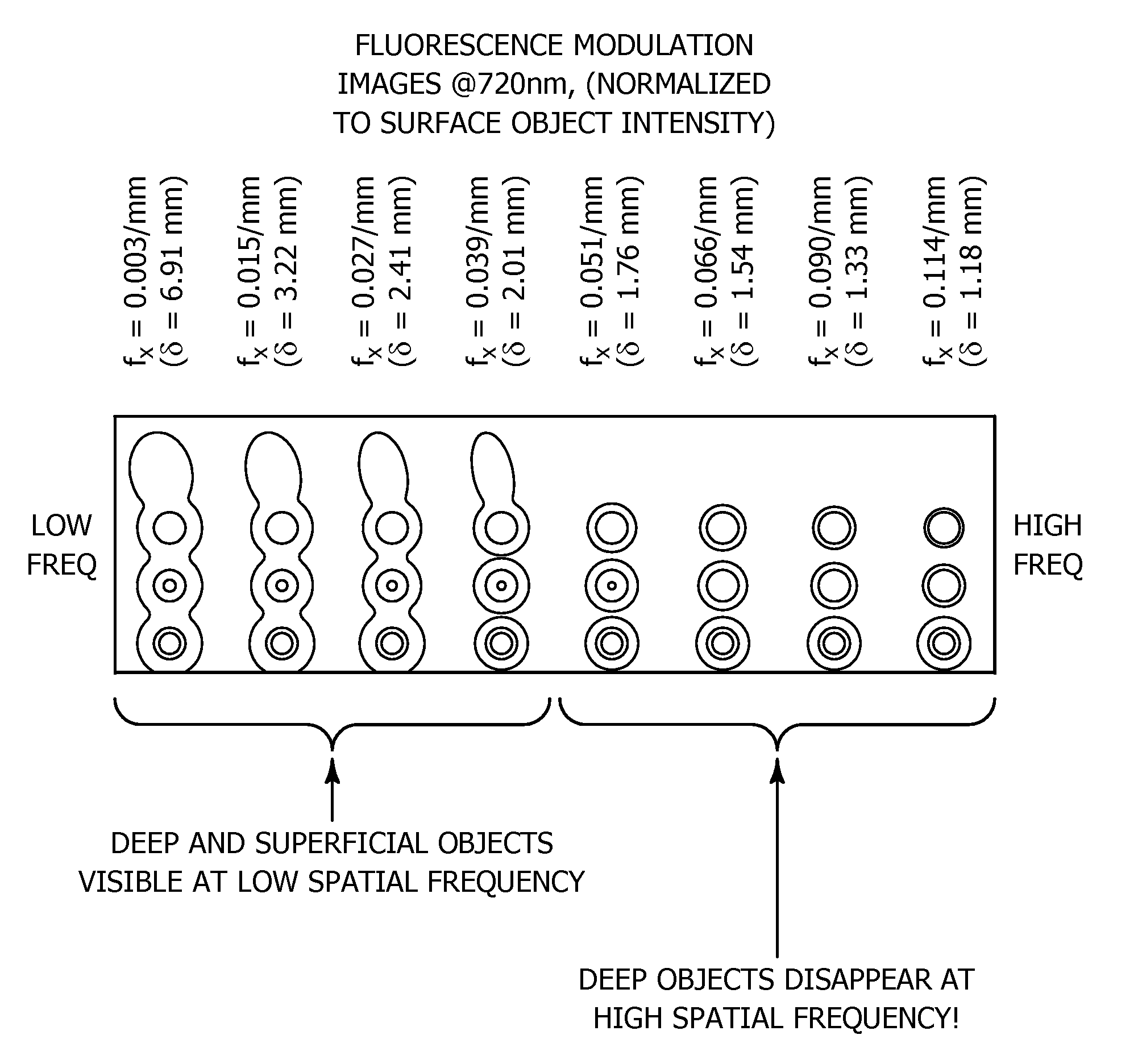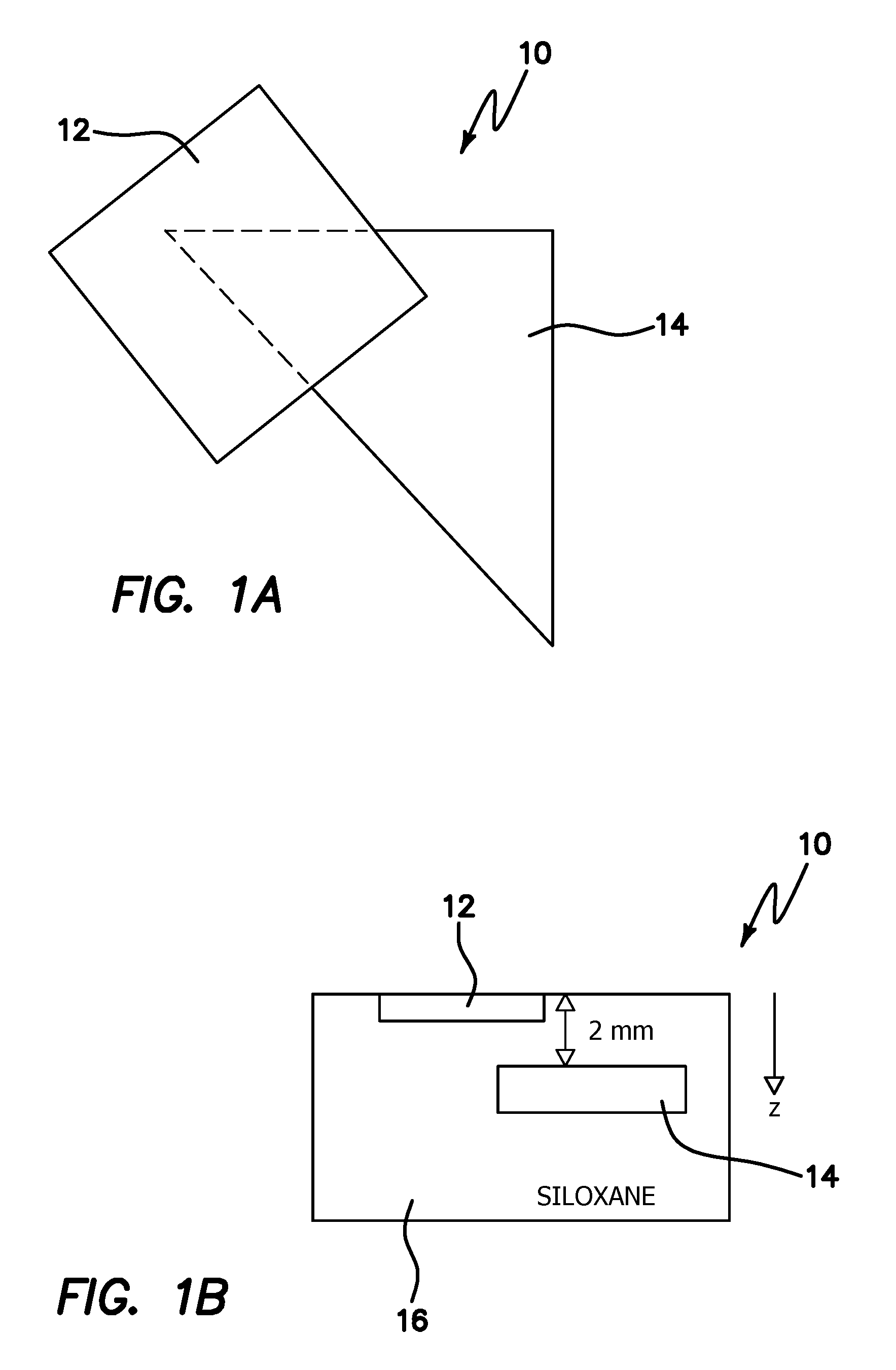Method and apparatus for high resolution spatially modulated fluorescence imaging and tomography
a spatial modulation and fluorescence imaging technology, applied in the field of optical measurement of turbid media, can solve the problems of limited fluorescence tomography approaches, small tissue volume report, and inability to achieve high-resolution spatial modulation fluorescence tomography
- Summary
- Abstract
- Description
- Claims
- Application Information
AI Technical Summary
Benefits of technology
Problems solved by technology
Method used
Image
Examples
Embodiment Construction
[0084]Illumination with a pattern of light allows for subsurface imaging of a turbid medium or tissue, and for the determination of the optical properties over a large area. Both the average and the spatial variation of the optical properties can be noninvasively determined. Contact with the sample or scanning is not required but may be desired. Subsurface imaging is performed by filtering the spectrum of the illumination in the Fourier domain but other filtering approaches, such as wavelet transform, principle component filter, etc may be viable as well. The depth sensitivity is optimized by changing the spatial frequency of illumination. A quantitative analysis of the average optical properties and the spatial variation of the optical properties is obtained. The optical properties, i.e. reduced scattering and absorption coefficients are determined from the modulated transfer function, MTF., which is incorporated herein by reference, disclosed wide field, broadband, spatially modul...
PUM
 Login to View More
Login to View More Abstract
Description
Claims
Application Information
 Login to View More
Login to View More - R&D
- Intellectual Property
- Life Sciences
- Materials
- Tech Scout
- Unparalleled Data Quality
- Higher Quality Content
- 60% Fewer Hallucinations
Browse by: Latest US Patents, China's latest patents, Technical Efficacy Thesaurus, Application Domain, Technology Topic, Popular Technical Reports.
© 2025 PatSnap. All rights reserved.Legal|Privacy policy|Modern Slavery Act Transparency Statement|Sitemap|About US| Contact US: help@patsnap.com



